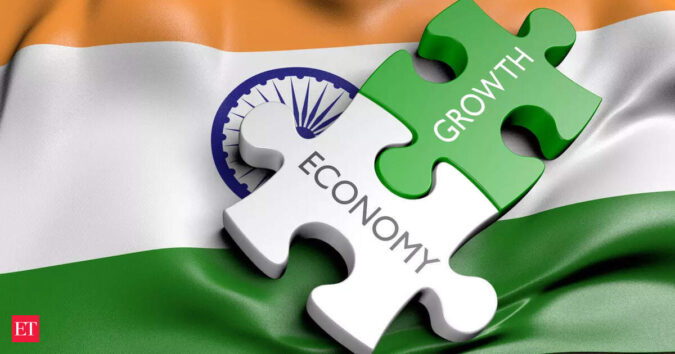India’s GDP in the July-September quarter follows a 7.8% expansion in the April–June quarter.
The country’s nominal GDP grew at an 8.7% rate during the previous quarter.
An Economic Times poll had forecast a 7.3% growth rate in the second quarter, higher than the Reserve Bank of India’s projection of 7%.
Economists had said pre-festive inventory buildup, coupled with GST rationalisation, would have bolstered activity.
India lowered Goods and Services Tax rates on most items from September 22, which is expected to bolster consumption in the world’s fifth-largest economy.
Demand for household products and groceries had revived in the second quarter even before the GST cuts on key staples took effect from September 22, ET had reported citing data by Numerator (formerly Kantar) and growth numbers of leading fast-moving consumer goods (FMCG) firms.
Finance Minister Nirmala Sitharaman had said that the GST rejig is set to bring to Rs 2 lakh crore in hands of the common people, signalling a possibility of higher discretionary spending.
Sectoral Classification
The primary sectors comprising agriculture and mining industries witnessed 3.1% growth on an annual basis as against 3.5% in the corresponding period of FY25.
Agriculture grew 3.5% in the second quarter of FY26 on an annual basis. The sector had grown at 4.1% in Q2 FY25. The mining sector contracted 0.04% in Q2 FY26, against a contraction of 0.4% in FY25.
Further, the secondary sector consisting of manufacturing and electricity industries recorded a growth of 8.1% on an annual basis. The growth rate for India’s secondary sector had stood at 4.0% in the same period of the last fiscal.
Manufacturing witnessed a growth of 9.1% for the second quarter of the current fiscal year on an annual basis. The manufacturing industry had recorded a growth of 2.2% in FY25.
The tertiary sector growth stood at 9.2% annually. Growth for trade, hotels, transport, communications and services related to broadcasting grew 7.4% on an annual basis in Q2 FY26, up from 6.1% in FY25.
Meanwhile, financial, real estate and professional services witnessed a growth of 10.2% in September quarter as against 7.2% in Q2 of the previous fiscal.
Public administration and defence recorded a growth of 9.7% in Q2FY26 on an annual basis against 8.9% in FY25.
Key drivers behind India’s GDP growth momentum
India’s economic growth is buoyed by a resilient rural economy, higher government spending and early export shipments.
“A sustained recovery in economic momentum emerged in the second quarter, driven by agriculture, manufacturing, and construction, as evidenced by high-frequency data,” Rajani Sinha, chief economist at CareEdge Ratings, told ET before the print was released.
Industrial output strengthened, with the Index of Industrial Production rising 4.1% on average in the September quarter, compared with 2.7% a year earlier. Manufacturing output expanded 4.9% from 3.3% in the same period last year.
Government capital expenditure climbed 31% in the September quarter, slower than the 52% jump in the preceding quarter but stronger than the 10% growth recorded a year earlier. Merchandise exports rose 8.8%, reversing a 7% drop in the corresponding year-ago quarter, lifted by front-loaded shipments ahead of US tariffs.
Household consumption, which accounts for roughly 60% of the economy, strengthened in the July-September quarter as rural spending improved on better agricultural output. Urban demand and private investment continued to lag, Reuters reported.
